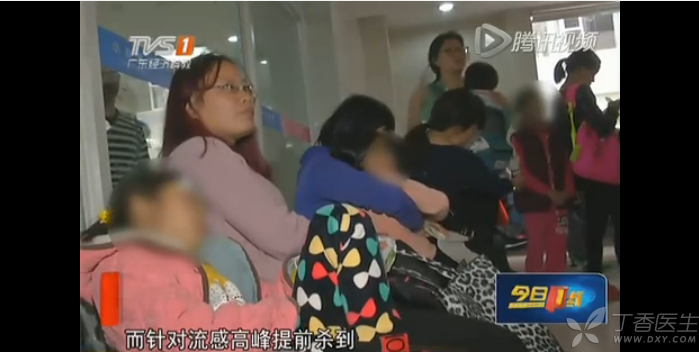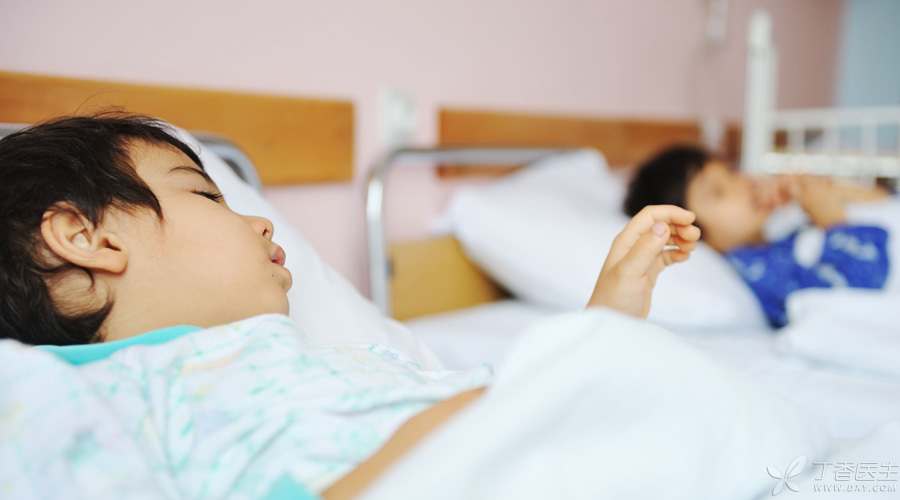
Every spring, paediatric clinics are always crowded with children who have caught a cold. These children are not suffering from a simple cold, but influenza.
Many mothers may think [it’s just a flu, which is so serious], in fact we know enough about flu, it can really be very serious.

Influenza is not a simple cold
Some people often like to use [catching cold] to explain all kinds of discomfort, but influenza is not [catching cold]. Influenza is caused by infection with highly infectious influenza virus, and catching cold is at best an inducement.
Within 1-4 days after the virus infection, the influenza virus will [live in harmony] with the body, and when the immunity of the human body decreases due to certain factors, the virus will multiply and damage the body.
After the virus enters the body, Not quietly [lying down]. It will begin to be discharged out of the body 24-48 hours before the flu symptoms appear through droplets, sputum, etc. This process usually lasts for 3-8 days, while infants can last for 1-3 weeks. During this period, infected children will have strong infectivity and often pass the flu virus to their families or bring it into public places such as schools, nurseries or residential areas.
Influenza is easy to be [misdiagnosed], pay attention to the difference
The symptoms of influenza are similar to those of adults, the same, except that children are not very good at expressing them.
At ordinary times, healthy children may show mild flu after being infected with influenza virus. Mild flu is no different from common cold, but it is more infectious and usually takes 2-3 days to recover.
However, typical influenza, which occurs suddenly, may have these symptoms from head to toe:
- Fever: Generally, it will burn for 3-5 days, Body temperature can be as high as 39 ~ 40 ℃, may appear afraid of cold, chills, cold hands and feet, headache, etc. The younger the child, the less able to express, may just be irritable, crying, etc. Eye performance: many children will also shed tears, have eye excrement or eyes slightly congested, etc. When these manifestations occur, don’t think it’s just conjunctivitis. Don’t classify these abnormalities as [excessive internal heat]. Symptoms of rhinitis: Rubbing nose; Sneeze; Running nose, if not much, is easy to become [nasal excrement]; Nose obstruction, children may show crying, wheezing, mouth opening breathing or snoring, etc. Throat discomfort: Older children will say that their throats are dry, itchy, painful, However, children may show that they are crying or afraid of eating, especially solid foods. Cough: mostly paroxysmal, not cough incessantly. The number of cough sounds may not be many, but it will be more frequent. At the same time, it is mostly dry cough. Other discomfort: older children will say that the whole body muscles and joints are sore and weak. Children are prone to crying and sticking to people.
These symptoms may occur, but not all of them may occur, and the younger the child, the more atypical the symptoms are, and febrile convulsions may also occur.
Babies before the full moon are less likely to get flu, but once they get flu, they are more likely to suffer from pneumonia and sepsis, appearing lethargy, milk rejection, less crying, less movement, apnea, etc.
What is terrible is not the flu itself, but various complications.
Most children’s flu symptoms will improve after 3-7 days, and cough and physical recovery often take 1-2 weeks, so the symptoms of flu itself are not terrible.
However, when influenza has complications, it will be very troublesome, such as laryngitis, acute otitis media, bronchitis, pneumonia, myocarditis, encephalitis, etc.
Among them, severe influenza is very dangerous, with pneumonia and dyspnea. This is the primary cause of death from influenza.
A large number of statistical results show that children younger than 5 years old are more likely to suffer from complications. However, babies younger than 2 years old are more likely to suffer from serious complications.

The common cold does not need to be antiviral, but the flu needs to
The common cold generally does not require antiviral treatment, but influenza does.
Children under 2 years old are prone to influenza complications. When influenza is diagnosed or suspected, antiviral therapy should be started as soon as possible regardless of the underlying disease, immune status of influenza vaccine and degree of influenza condition. It is ideal to start treatment within 48 hours of onset.
However, over time, influenza viruses are prone to drug resistance. Since October 2015, drug resistance monitoring has shown that amantadine, rimantadine and other drugs have little effect on influenza a (H1N1) and A (H3N2) subtypes, while antiviral drugs such as oseltamivir, zanamivir and panamivir are effective.
Therefore, in the face of influenza, parents should no longer use amantadine, rimantadine and other drugs to fight the flu. Not only is it useless, but also adverse reactions such as anxiety, inattention and headache may occur.
No good treatment can compare with prevention.
1. Influenza vaccination
This is the most effective prevention method. The protection starts 2-4 weeks after vaccination, and gradually decreases after 6-8 months. Therefore, the vaccine needs to be vaccinated every year to obtain effective protection.
Usually, babies over 6 months old can start to be vaccinated with influenza vaccine. When children under 8 years old are vaccinated for the first time, the protection effect of 2 doses (the interval between 2 doses should be ≥ 4 weeks) is better than that of 1 dose.
Step 2 Take anti-flu drugs
Drug prevention cannot replace vaccination, but can only be used as a temporary preventive measure that has not been vaccinated or has not acquired immunity after vaccination. The course of treatment is generally 1-2 weeks.
STEP 3 Pay Attention to the Details of Life
(1) Wash hands frequently. Wash hands with soap or hand sanitizer and flowing water. Do not wipe hands with dirty towels. Wash hands immediately after touching respiratory secretions (such as sneezing).
(2) Cover your nose and mouth with handkerchiefs or paper towels when sneezing or coughing to prevent droplets from infecting others. Influenza family members should wear masks at home or when going out to avoid infecting others.
(3) During the period of high incidence of influenza, try not to reach crowded places with dirty air; When you have to go, you’d better wear a mask.
(4) Balanced diet, moderate exercise and adequate rest to avoid excessive fatigue.
(5) Pay attention to opening windows for ventilation to keep indoor air fresh.
